Propaganda and Commercial Films from the 50s, 60s and 70s
In 1953, the Israeli Public Information Administration was established, adjacent to the Ministry of Education and Culture. It produced dozens of ideological propaganda films and integrated them into the educational activities of the various state institutions, such as the the Histadrut (the General Organization of Workers in Israel). The film documentaries served as a valuable and powerful instructional tool: educating youth and adults on social issues, diverse industries, Jewish holidays and historical events. Due to the influx of new immigrants, the Israeli government used the informercials has an illustrative tool. This medium provided a popular review of current affairs and news stories with topical interest, such as draining of the Hula Lake (swamp) and its transformation into agriculture land; milk products and its health benefits; as well as occupational safety and health. These propaganda films also allowed foreigners to get to know the country, its landscape, its industries, its inhabitants and its goals.
Opposition spokesmen criticized the administration's actions, which they said were a propaganda device for the ruling party as influencers, presenting facts selectively to encourage their agenda. Claiming that "taming is a dictatorial way of public opinion.” In October 1959, the information center was replaced.
The propaganda films of that era were characterized by pathos-saturated narration and landscape photography. Pommy, on the other hand, tried to deliver the “message” with a twist, blending a human story with humor.
Pommy has written and produced hundreds of informercials/propaganda and commercials, for the government and private companies such as Amkor, Elite Chocolates, the Banana Growers Association, Egged Public Transportation, Israeli Dairy Board, Electra Company, the Ministry of Housing, Shavit Stoves, the Shakem (the IDF canteen and later department store) and other companies within the Israeli economy.
Defendant Joseph Kiki - 1956
Screenplay: Moshe "Pommy" Hadar
Directed: Adam Goldberg
Cast: Aliza Sternicka, Michael Gore, Joseph Karl
Comedy about Israel Civil Defense Administration and shielding against potential air strikes
The plot: A citizen is brought to justice before his condominium’s community association. Mr. Joseph Kiki is accused of continued harassment of his neighbors. The filing parties claimed that he had forced them to go down to the shelter during drills; practice “duck and cover”; painted them with blue and black paints to simulate bruises and injuries, while practicing first-aid. He also expelled a neighbor's dog, named "Hickha" from the shelter. In short, Mr. Kiki was a "nut” about civil defense. Before the community association had a chance to render a verdict, a real attack occurs, absolving Mr. Kiki of any wrongdoing and hailing him as a hero.
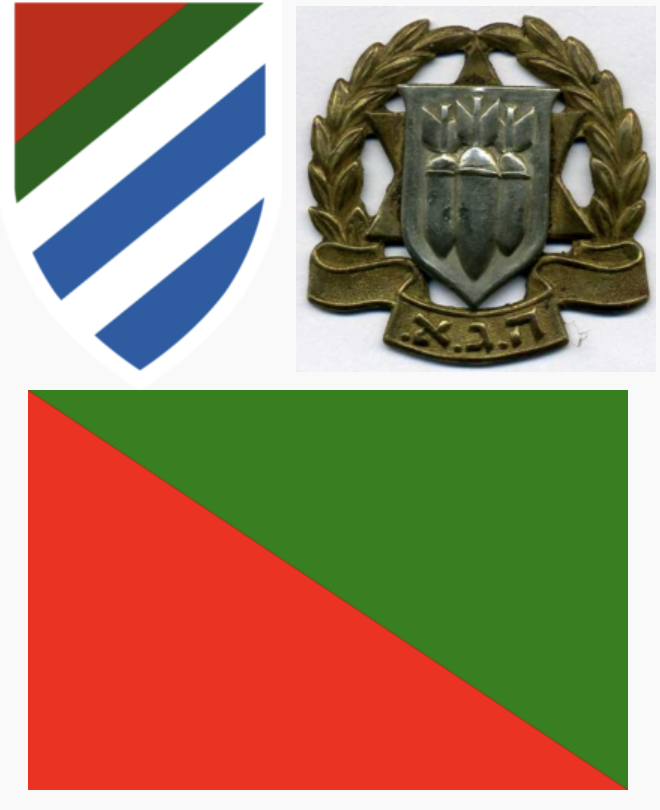
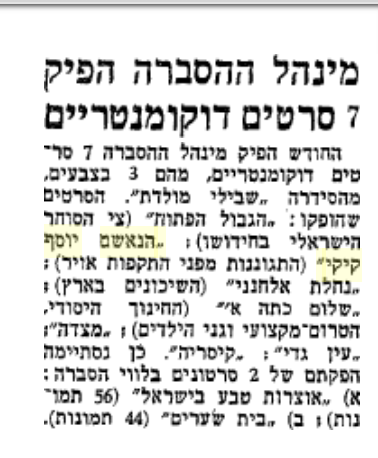
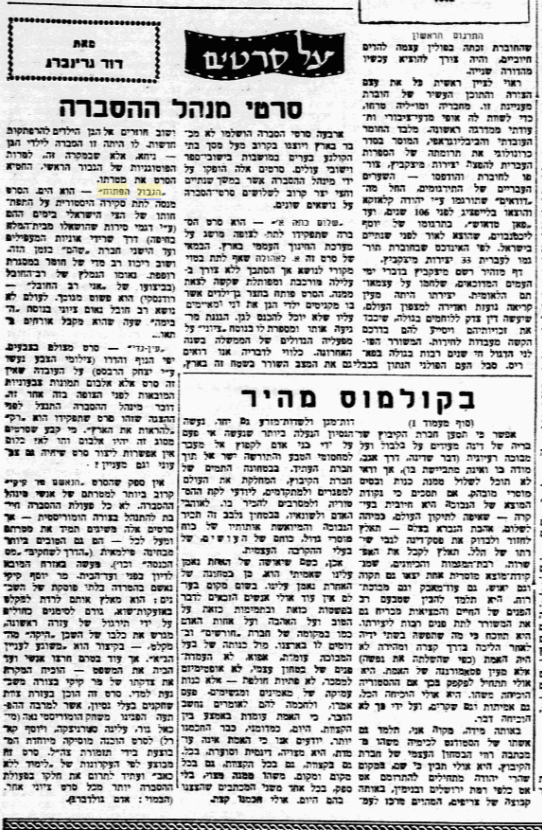
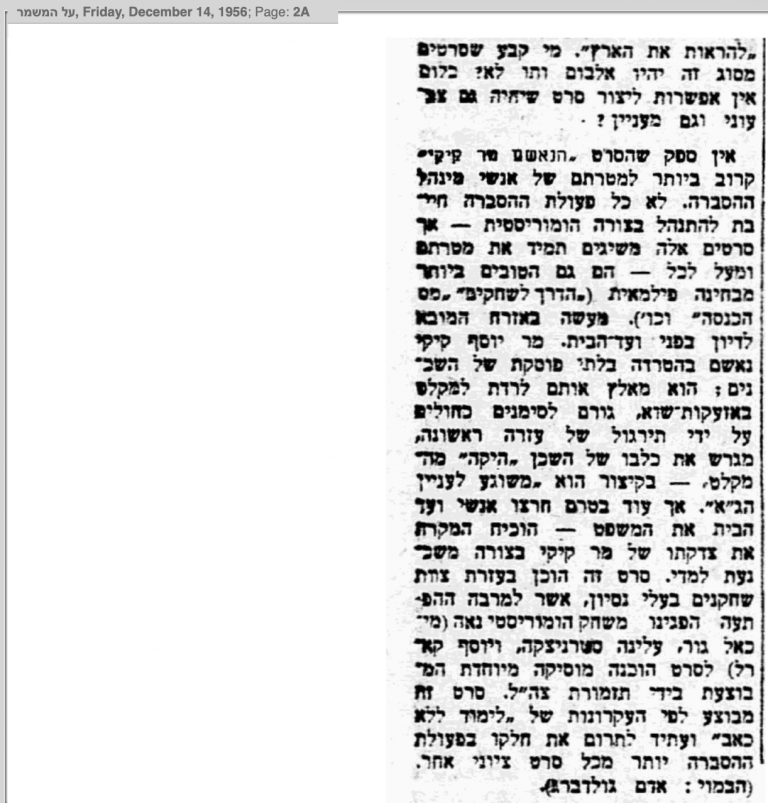
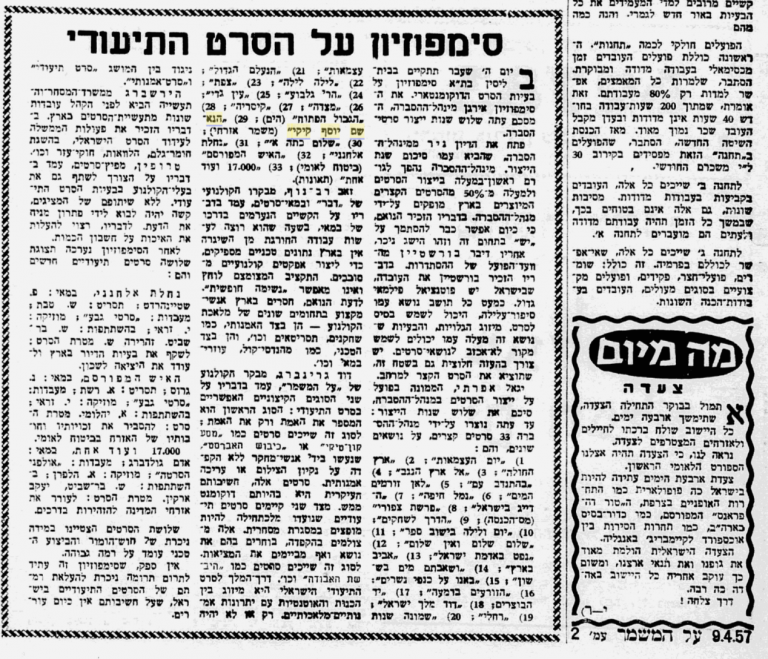
Polonius' Vacation - 1956
Screenplay: Moshe "Pommy" Hadar
Cast: Ilana Rubina, Alexander Diamond, Rafael Halperin (Mr. Israel)
Production cost: ten thousand Israeli Lira
The film was sponsored by the municipality of Tiberias and the Israeli Ministry of Tourism
The plot revolves around an American tourist (Alexander Diamond) who ditched the heavy coat, cold weather and snowstorms in the United States, to arrive in Tiberias Hot Springs. He dreams that he meets the Roman military general Polonius (Raphael Halperin, Mr. Israel) and together they roam all around the charming corners of Tiberias and the surrounding areas.

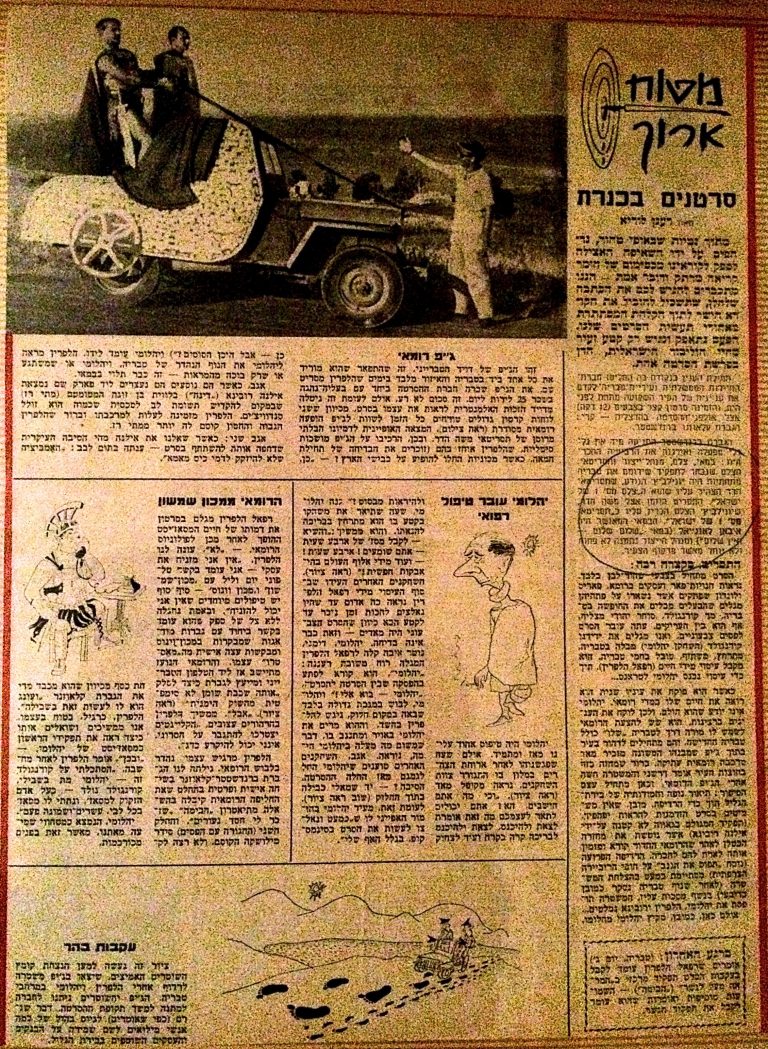
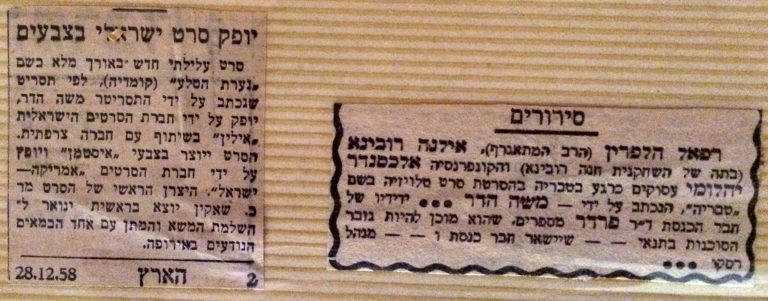
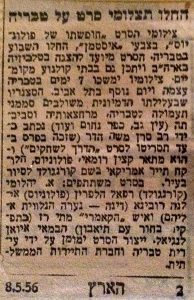
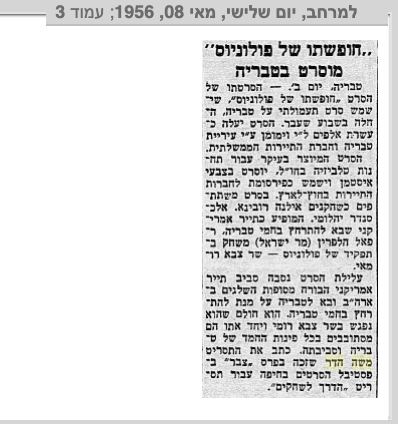
Vital Health - 1958
Screenplay: Moshe Hadar
Director: Nathan Gross
Photo of Miracles Leon
Cast: Jacob (Yankale) Ben-Sira, Gideon Singer
Music: Eddie Halpern
Announcer: Samuel Segal
"The film choose the right medium and reasonable way – creating an endearing comedy film which, by the way, also conveys some facts and figures about the nutritional, economical, pioneering value of the dairy industry… Major Moshe Hadar is a screenwriter with good ideas. The gags he invented for this film – quite successful…” (David Greenberg, movie review, Vital Health, Al Ha’mesmar, November 13, 1958)
Vital Health story is based on a series of dreams of a kibbutznik (Yankele Ben-Sira), who sees himself in various incarnations – as a professor at the Institute for Dairy Research, a dairy journalist, milkman attacked by housewives, a server in a milk-bar buffet and a women organizer lecturing on milk…
Yankale Ben-Sira, the co-star of "Vital Health" talks about the Film on November 16, 2015
Yankale Ben Sira called himself the "national eulogizer" of Israel's artists. As an AMI (Israel Artists Association) member, he made it his mission to attend each funeral and say few humorous remarks to lift the mourners’ spirit. The enclosed video was shot during the 10th anniversary memorial to the director, Nathan Gross and the month anniversary of the death of his brother Yoram Gross. Ben-Sira was telling anecdotes from his work on the movie “Vital Health” (screenplay by Moshe Hadar). In fact, the most important movie of his Ben-Sira’s life was the film by Yoram Gross – "Only One Lira" 1962 (screenplay by Moshe Hadar) in which he played alongside his acting partner, Gideon Singer. It was the first ever Israeli slapstick comedy. This comedy set the stage for many other films of the 1960s. Even though Yankale was a versatile and an excellent actor/comedian, his destiny was to play only supporting roles. He would always be remembered for his small roles as an amusing character.
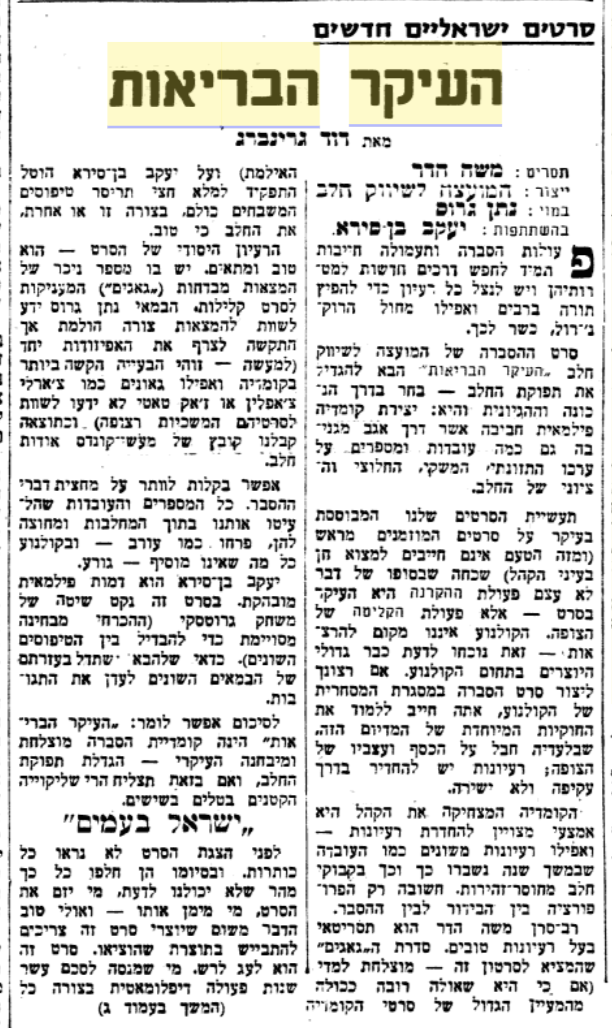

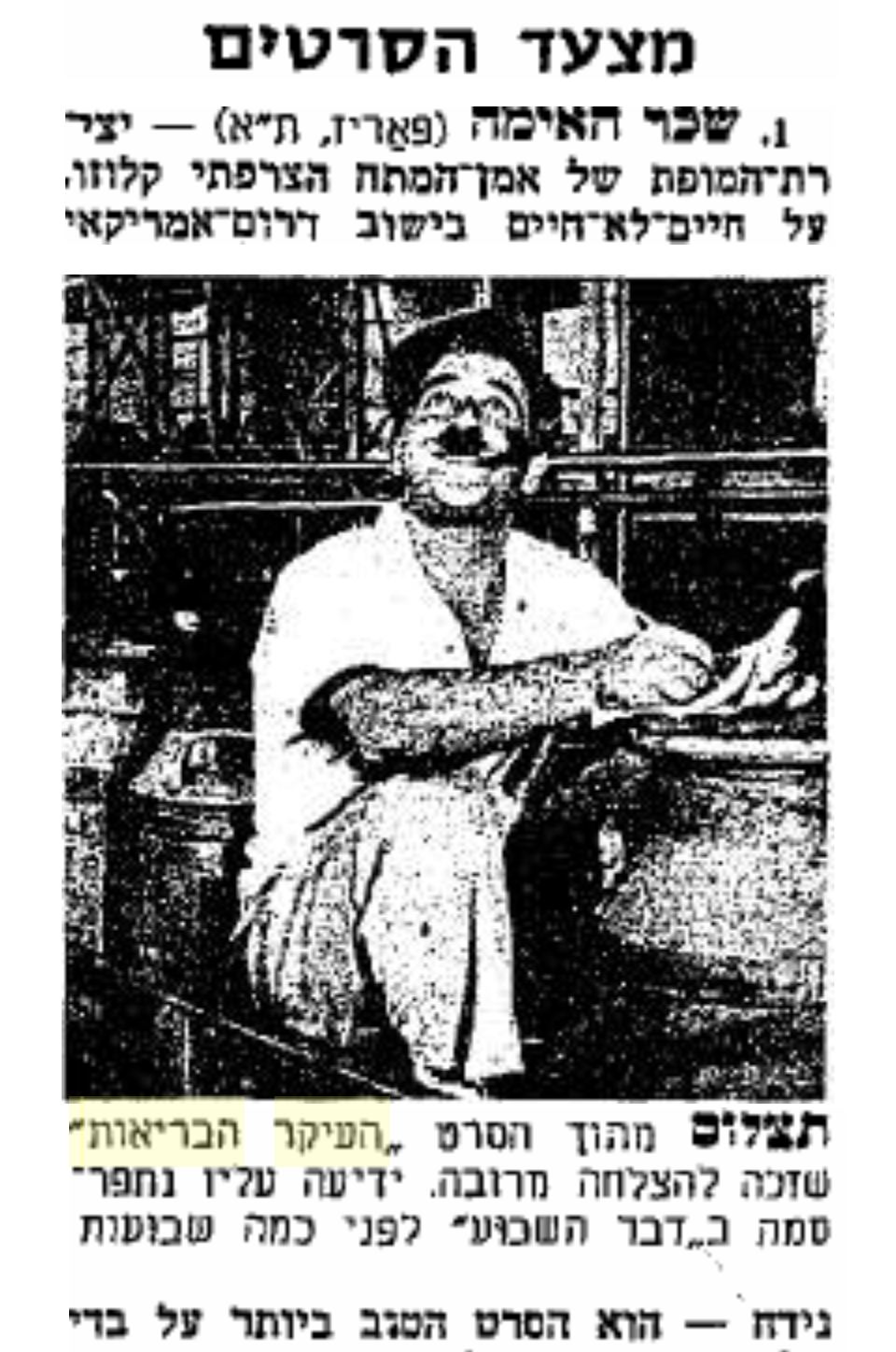

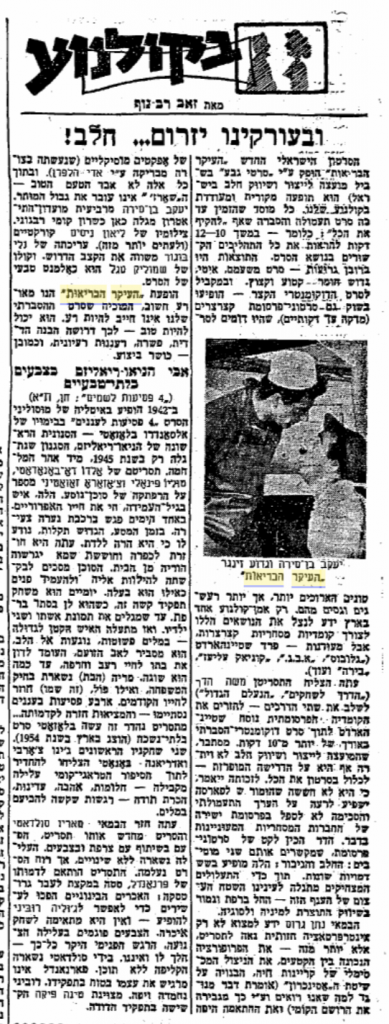
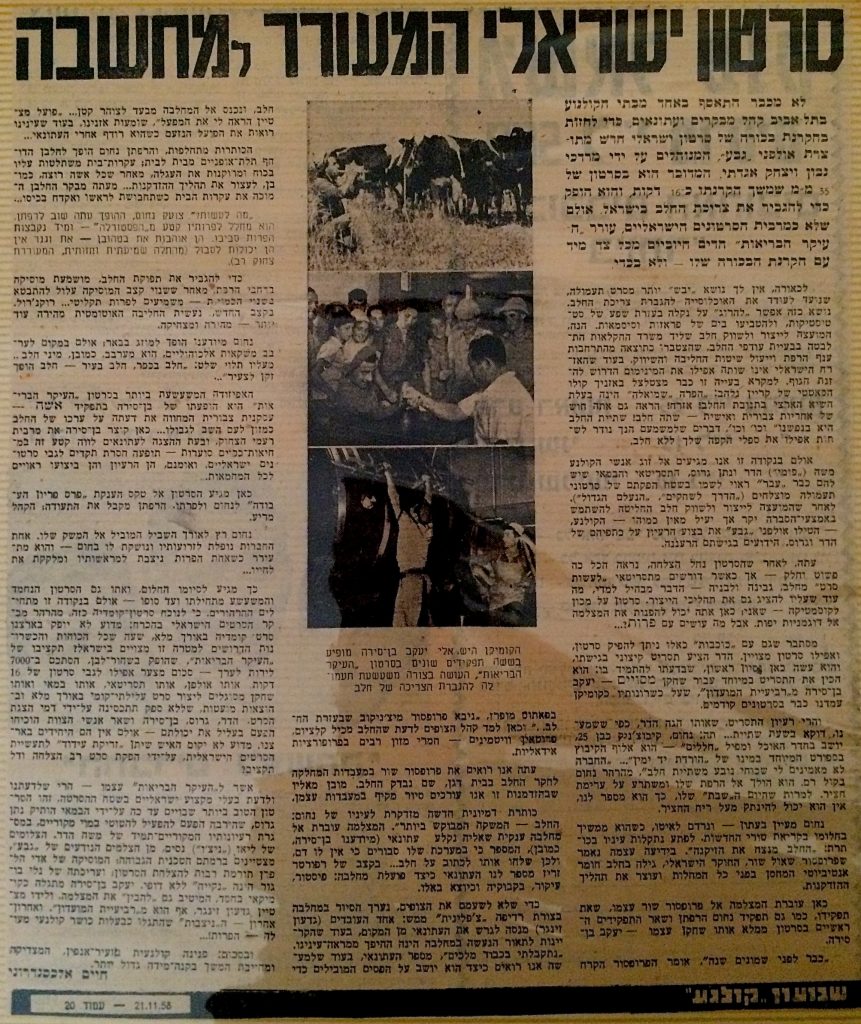

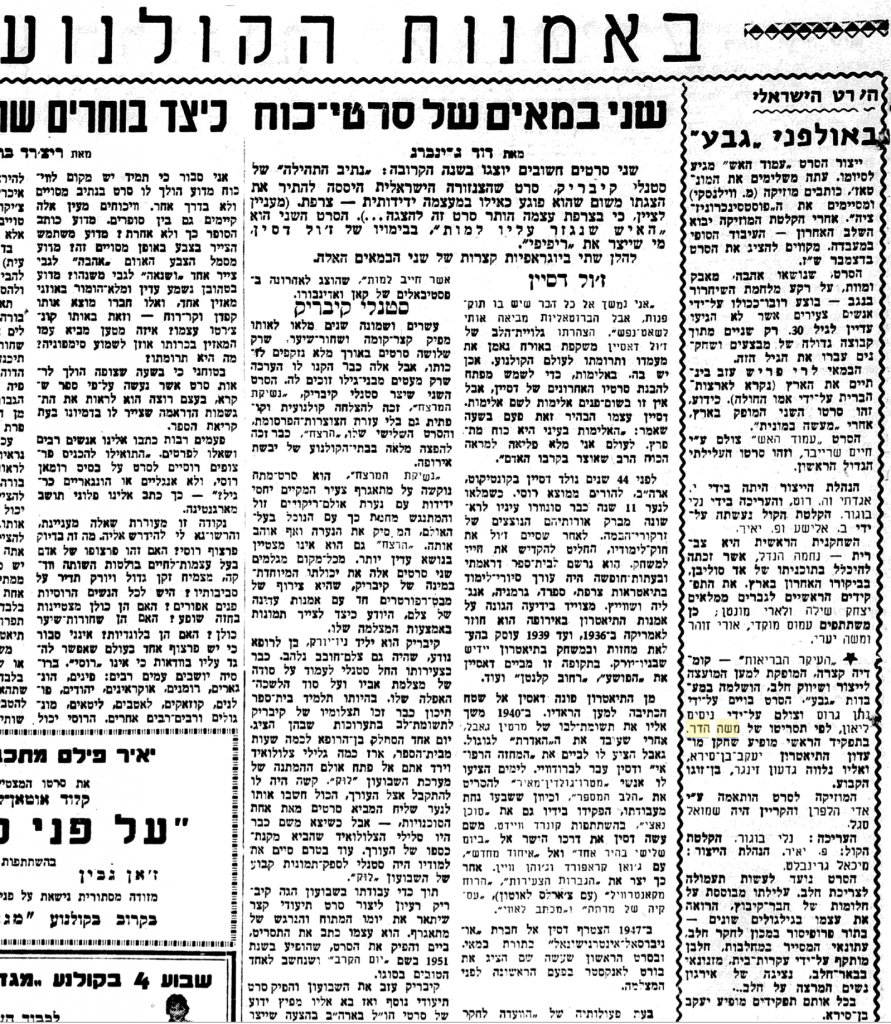
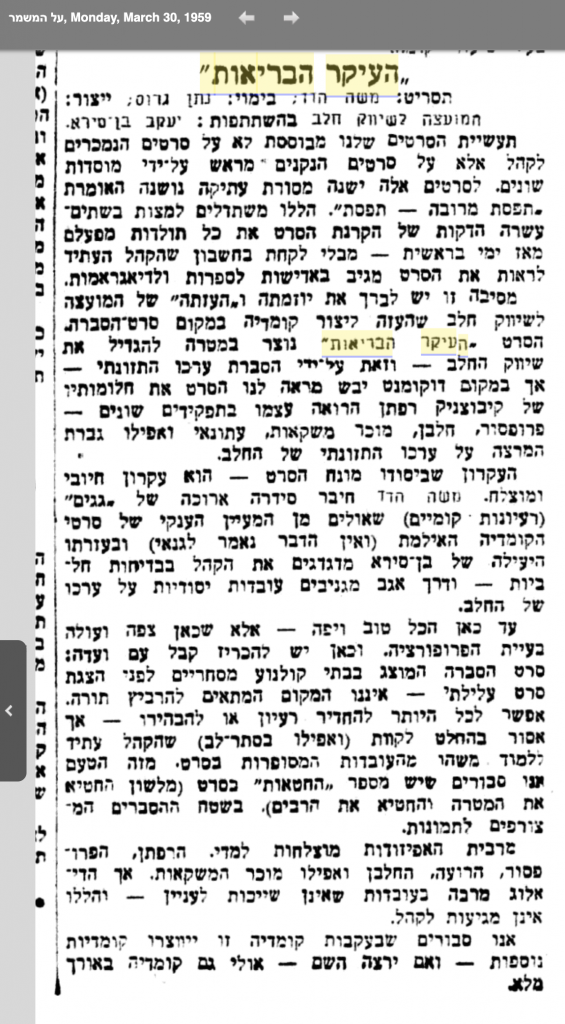
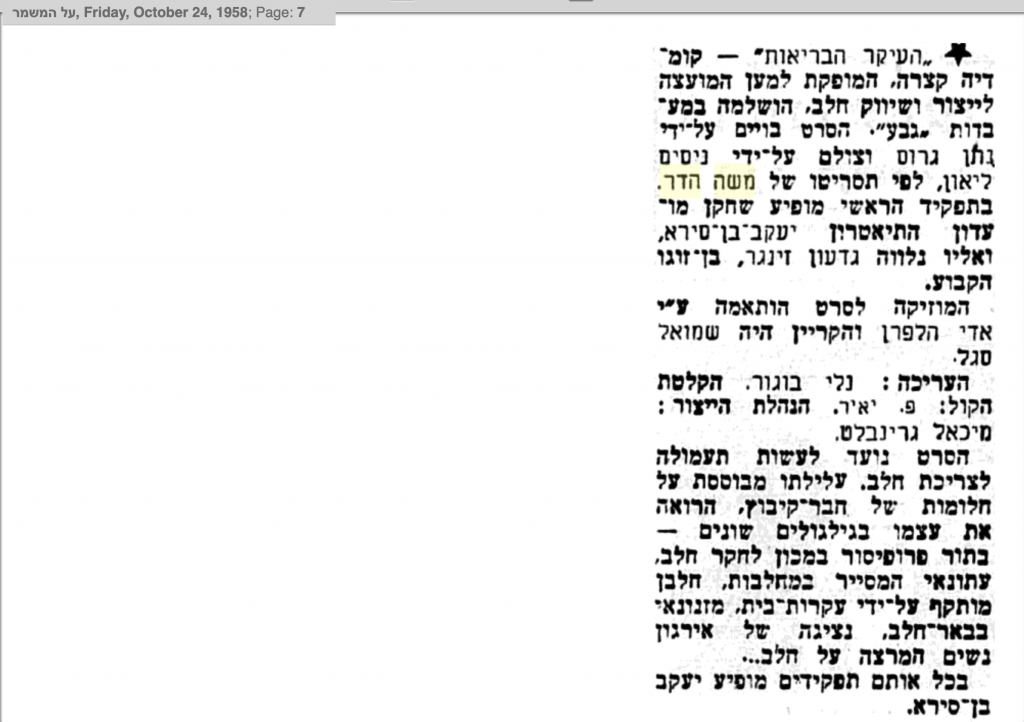
A Doll Act – 1959
Screenplay: Moshe Hadar
Director: Yoram Gross
A film for the Ministry of Labor and Housing. An attempt to combine a new technique a reggae movie with a puppet movie.
Describes the sudden change in the landscape of the country following the expeditious urban construction. It is done with graceful and heartfelt humor.
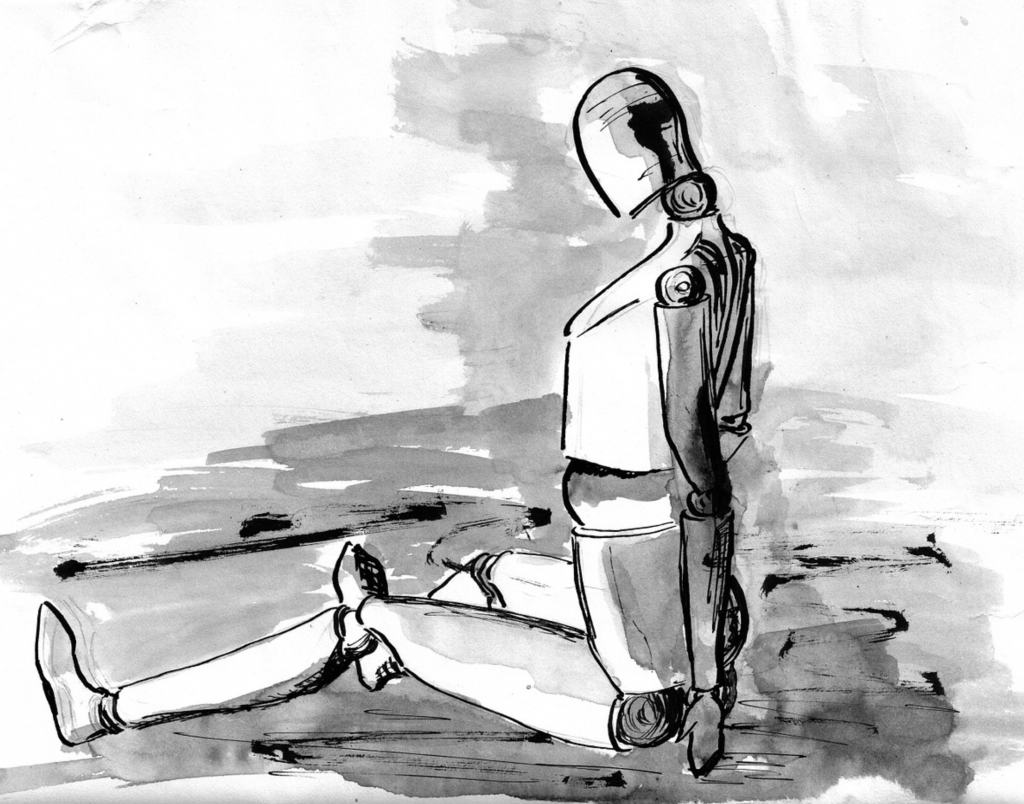

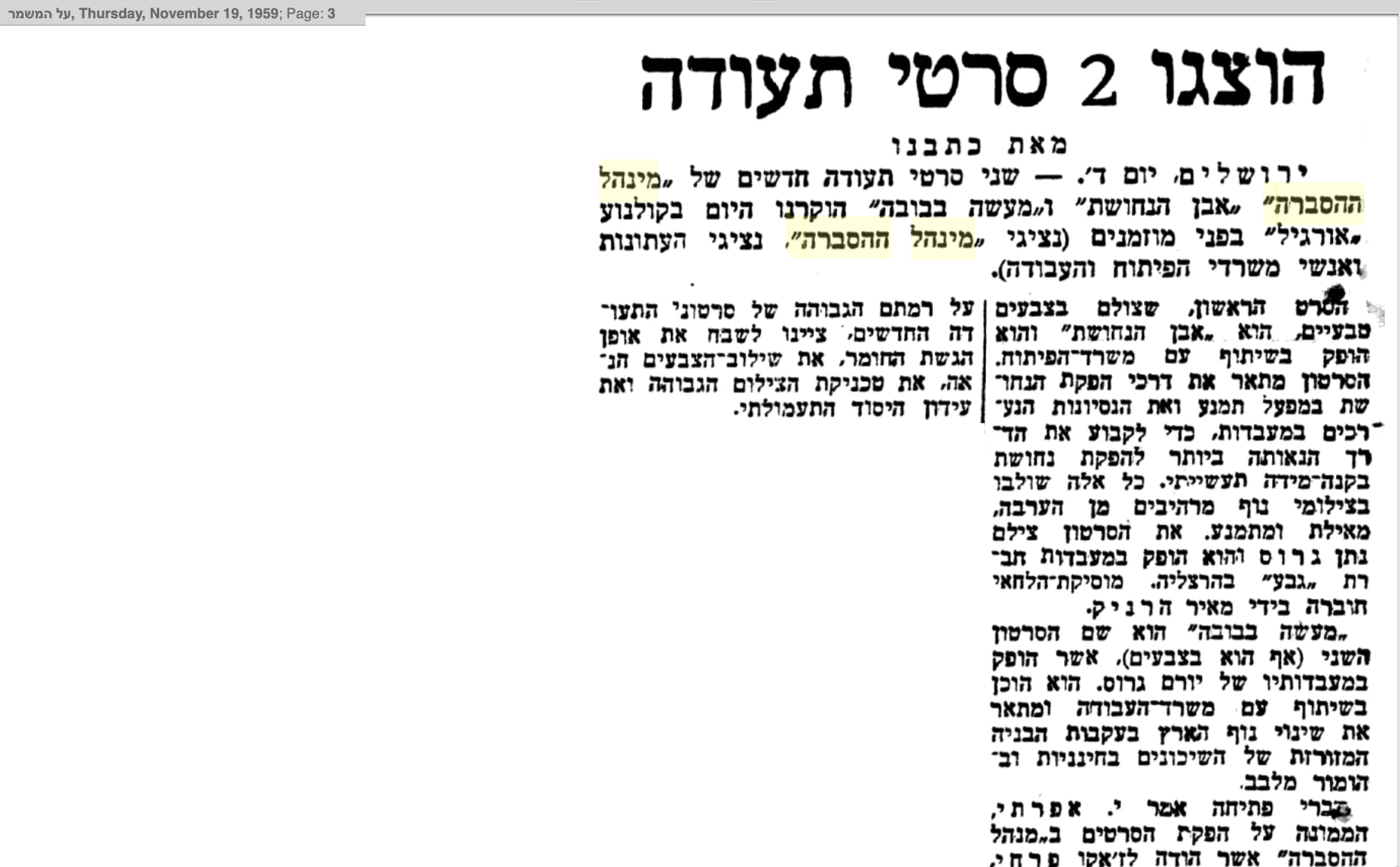
Los Paraguyos In the Holy Land 1960
Los Paraguyos or Paraguay was a South American singing group with the mythical leader Luis Alberto del Parana.
According to an article in the Herut newspaper, January 11, 1960, a film named "Los Paraguyos in the Holy Land,” was shot in Israel. “The story was written by Moshe Hadar, cinematography by Yesha Unilovitz and directed by Barak Shakin. The film was sent for development at a film lab in Paris." It goes on to say, "The quartet of Los Paraguay signed distribution agreements in various South American countries, a number of copies of the ready-made film, would be screened throughout various television stations in the Spanish-speaking countries. Government, public and private entities have acknowledged the multi propaganda purpose of the video and the artistic value, which adds great importance to its significance… Companies provided, free of charge products and services, helping document the authentic script plot…”
In addition to the Los Paraguyos singers, the young dancer Yona Levy participated in the filming, as well as members of the Nahal training group in the Kibbutz, Miss El Al Airline, flight attendant, Illa Harel and a long line of Tel Aviv women, IDF soldiers, Arab shepherds and fishermen from the Kineret.
According to an article in Ma'ariv on February 27, 1963, the film "Los Paraguyos in the Holy Land” was not completed by its producers because the backers encountered financial crisis. A company named Spotlight decided to shoot a new movie called "Hava Nagila" (using a script by Moshe Hadar) and to include in a section on "Los Paraguyos in the Holy Land."
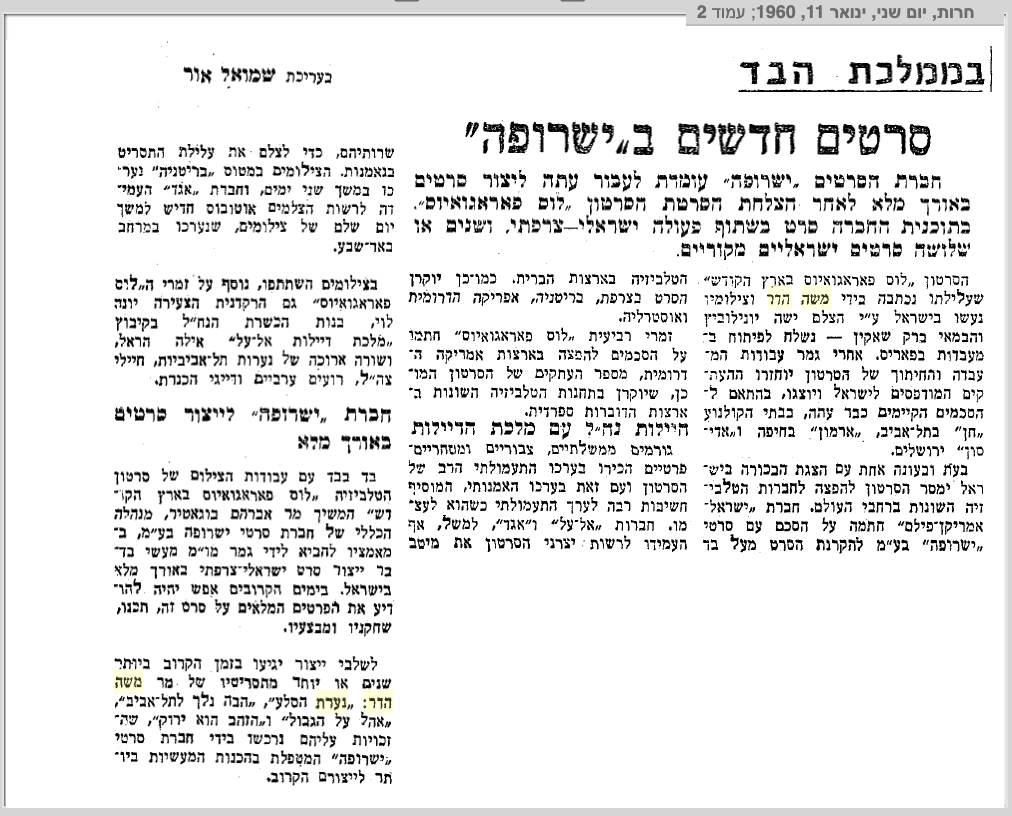
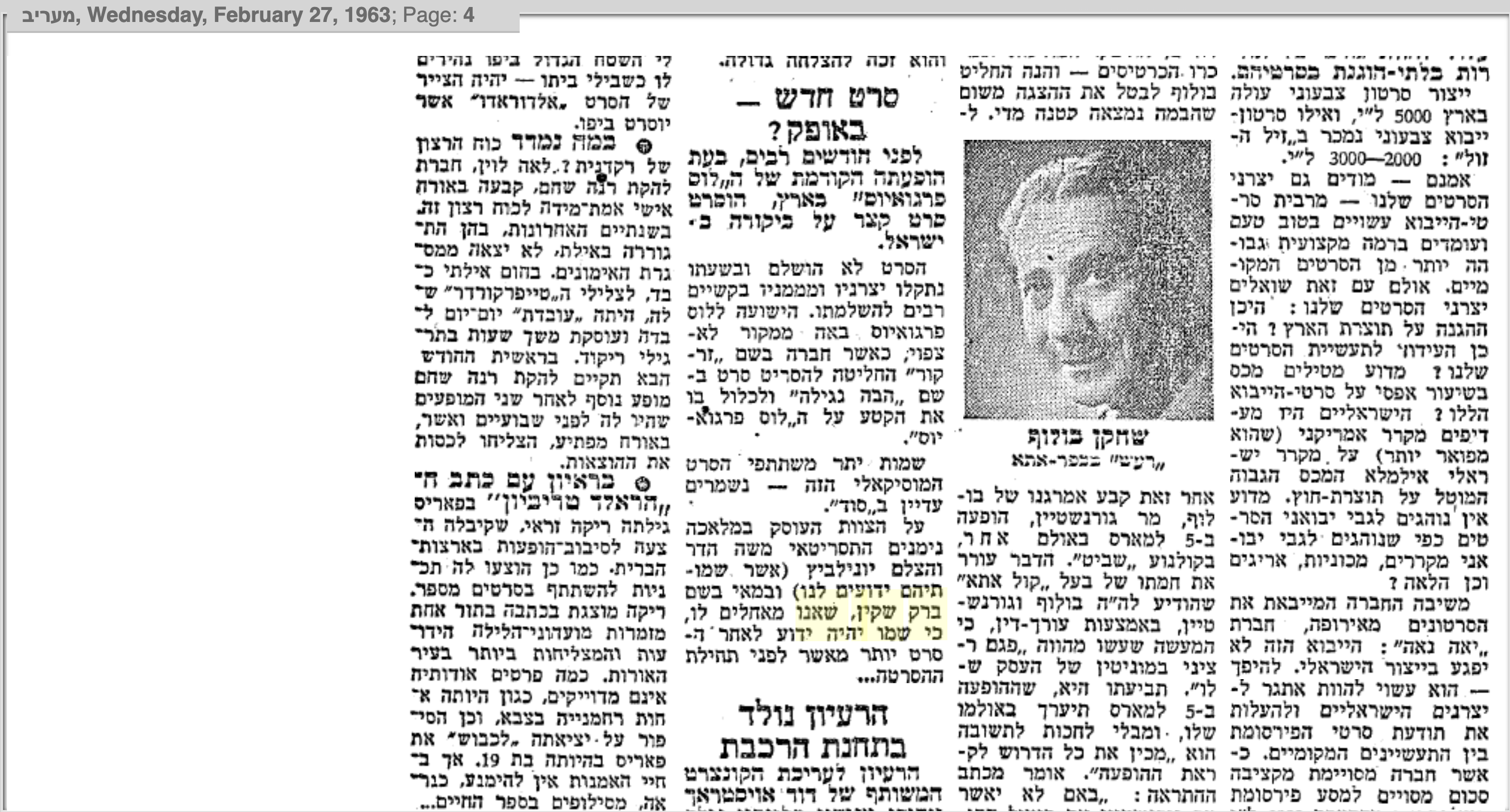
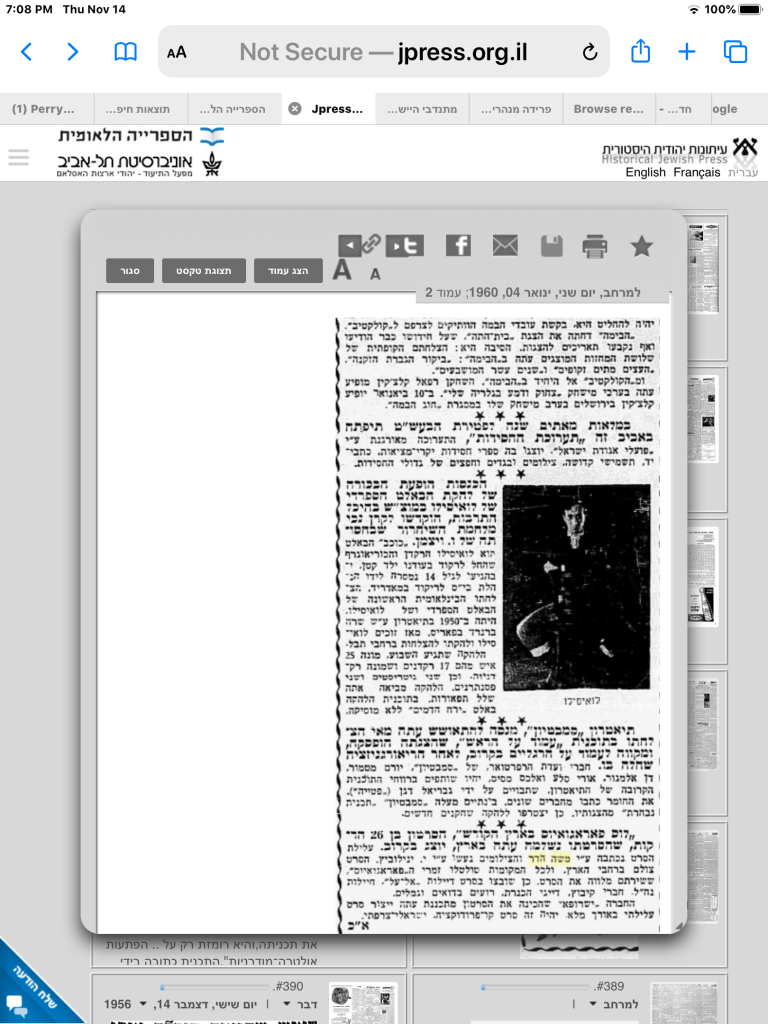
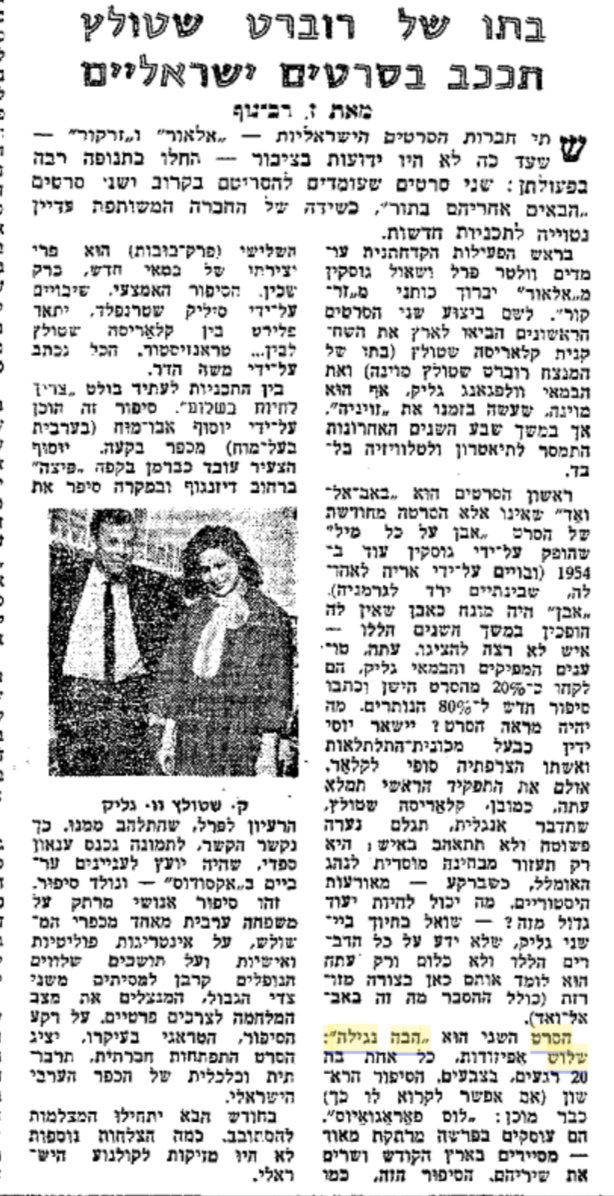
The Great Maneuver - 1960
Screenplay: Moshe Hadar
Director: Yoram Gross
A 13-minute video by Shakem (the IDF canteen and later department store)
The film presents the products (total of 23 items) of the Shakem wholesalers. The screenplay was written by Moshe Hadar, and it has an original idea: along with the first USA and USSR manned mission to the moon is also the Shakem (the IDF canteen and department store). The Shakem products are displayed with a twist, for example, wine bottles appear as cannons, cigarettes appear as airplanes, sweets deficit as flying saucers, etc. Yoram Gross animated the otherwise still products with imagination and momentum. Raanan Luria provided attractive characters and Azaria Rapaport wrote and read dynamic and vibrant lyrics. The problem with the movie was: They used too many products and the great ideas didn't have enough screen time. They passed by too fast.



The Happy Fishermen – 1961
The film plot portrays two young man from the Galilee, who were born and raised near the Hula Lake (swamp) and are attached to their “playground.” One day they are witnessing the transformation of the marshland and their beloved scenery. Lake Hula is drained of life, their lives. The script is full of rich comedic episodes.
It was selected as one of the ten best screenplays out of 258 and was sent to an international committee in Rome. The screenplay competition was sponsored by the tenth anniversary committee and the Ministry of commerce and Industry.

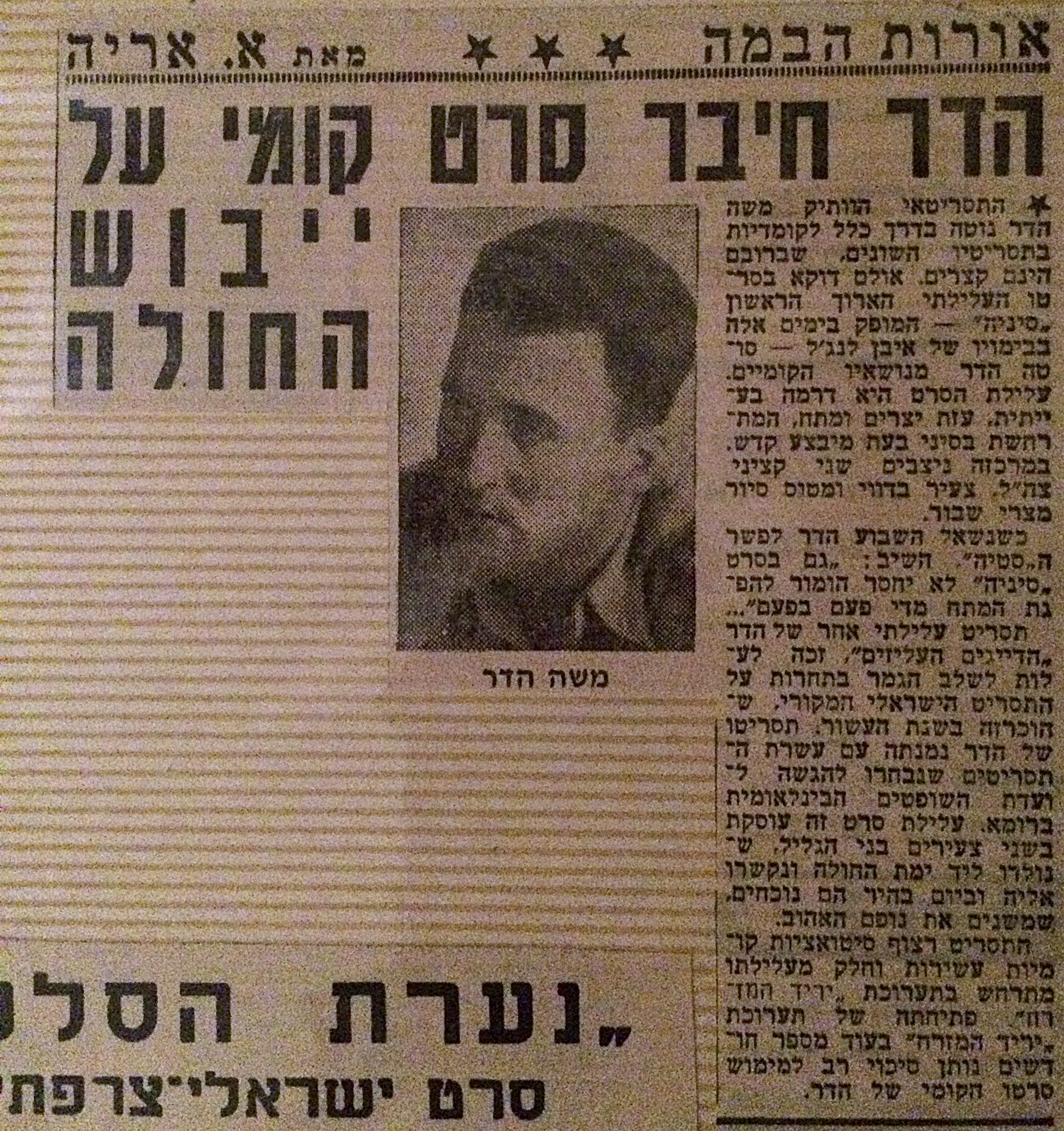

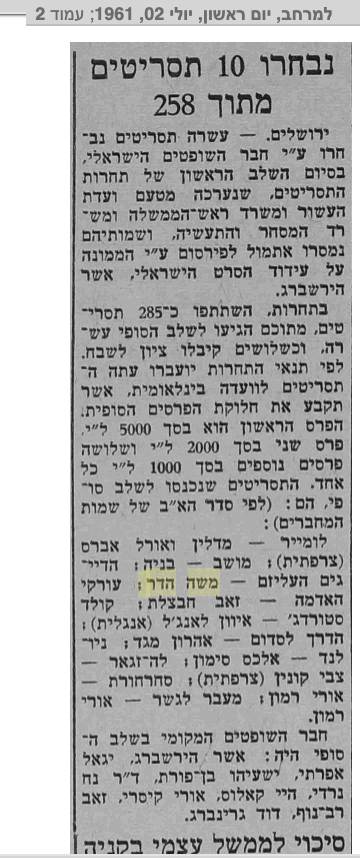
Into the Sea -1961
Screenplay: Moshe Hadar
Director: M. Sternfelf
Photographers: Y. Korczak, Isaac Herbstab
Length: 14 minutes
Colored film, in collaboration with the Israeli Navy
The purpose of the film is to encourage Israeli youth to enroll in ports and marine jobs

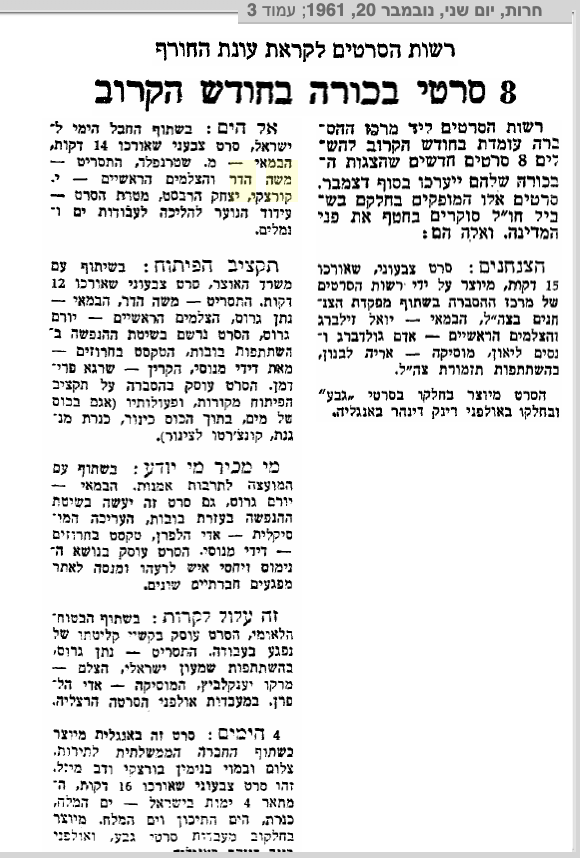
Derech Eretz (Civility) – 1961
The Public Council for Culture and Art has commissioned a film illustrating the issues of impoliteness
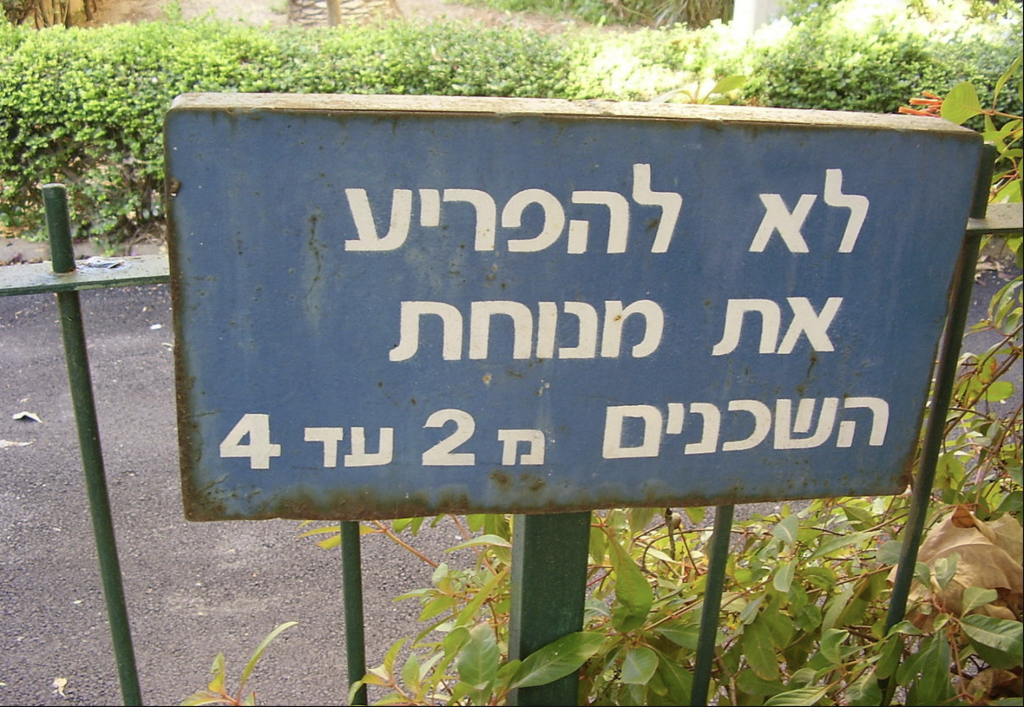
Don't Disturb the Neighbors' Rest between 2 and 4 pm
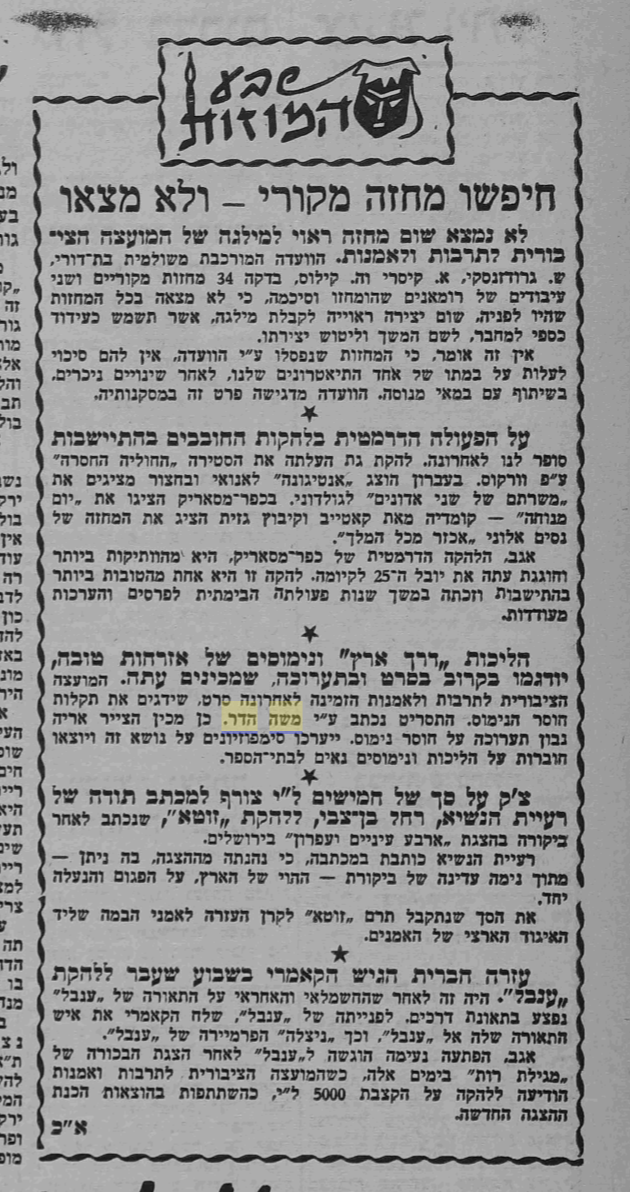
Development Budget - 1961
Screenplay: Moshe Hadar
Director: Nathan Gross
Photographer: Yoram Gross
The text in rhymes: By Didi Manusi
Narrator: Shraga Friedman
Length: 12 minutes color film
The movie was filmed with a puppet show using the animation method
The film deals with explaining the development budget of the Mekorot National Water Company, and its programs. The film depicts the National Water Carrier of Israel, which was the largest project in Israel at the time.


The After-Shock Secret - 1965
Screenplay: Moshe Hadar
Director: Alfred "Freddie" Steinhard
Cast: Shayka Levy
Length: 12 minutes
The first original film about safety, depicting a Haifa port worker who imagine his post traumatic injury journey, after a severe work-related accident.
Produced by the Department of Trade Union and the the Israel Institute for Occupational Safety and Hygiene (IIOSH) of the Histadrut (the General Organization of Workers in Israel).
Presented at the Montreal Film Festival, won the first prize in its category dedicated to job safety education.
The movie also received an award in 1966 at the International Film Festival in Antwerp, Belgium.

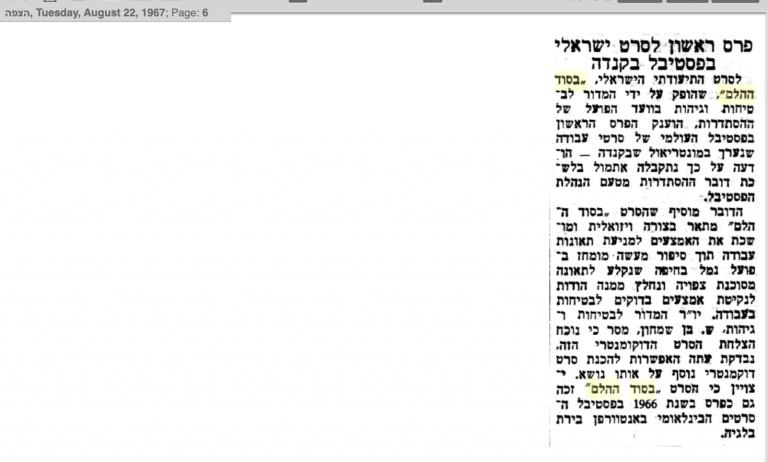
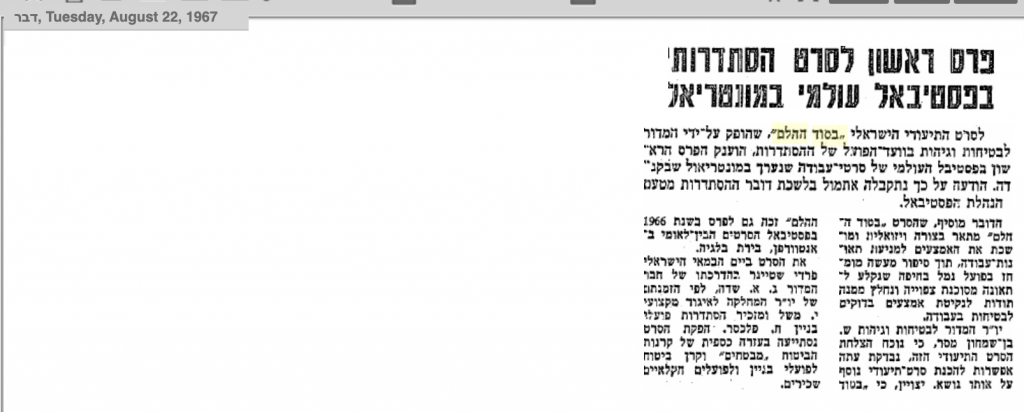


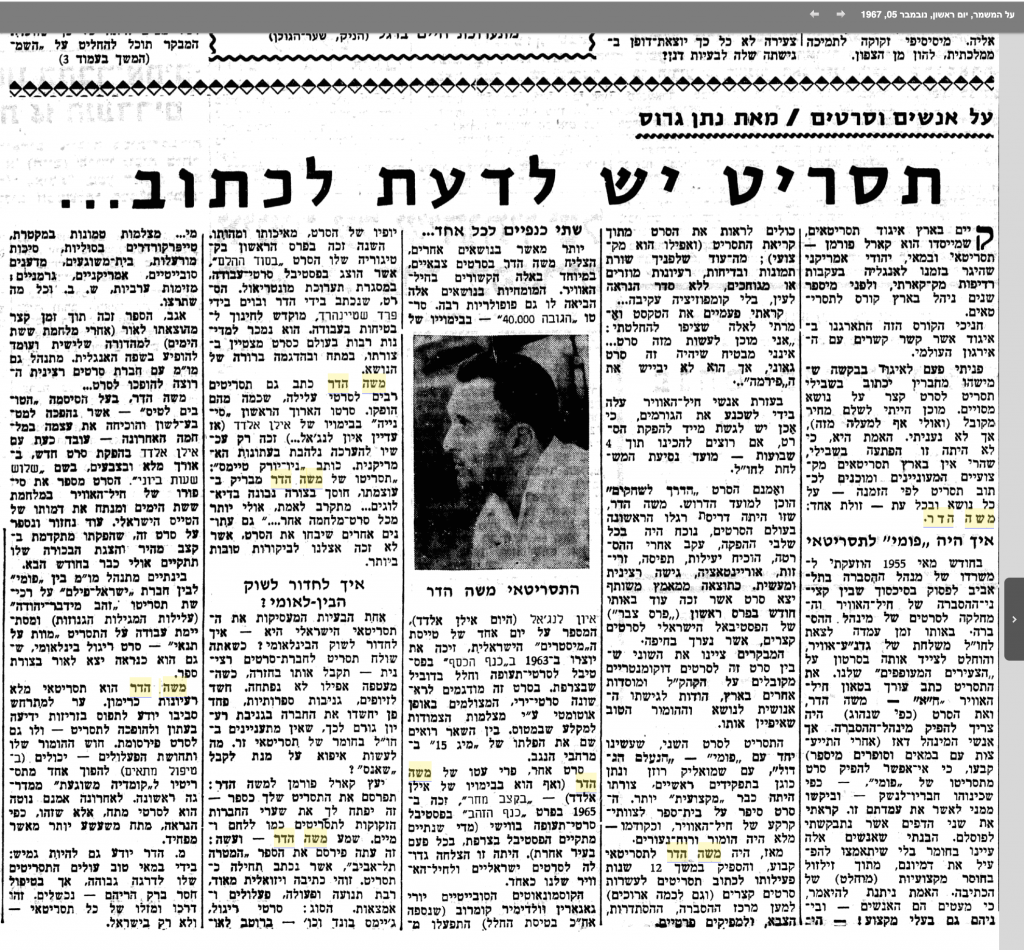
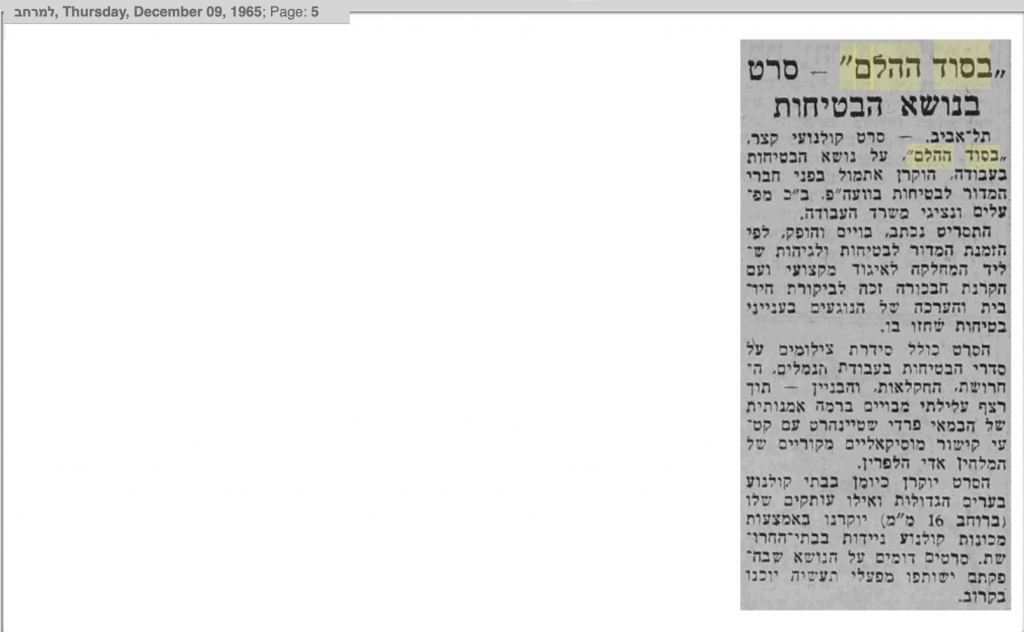
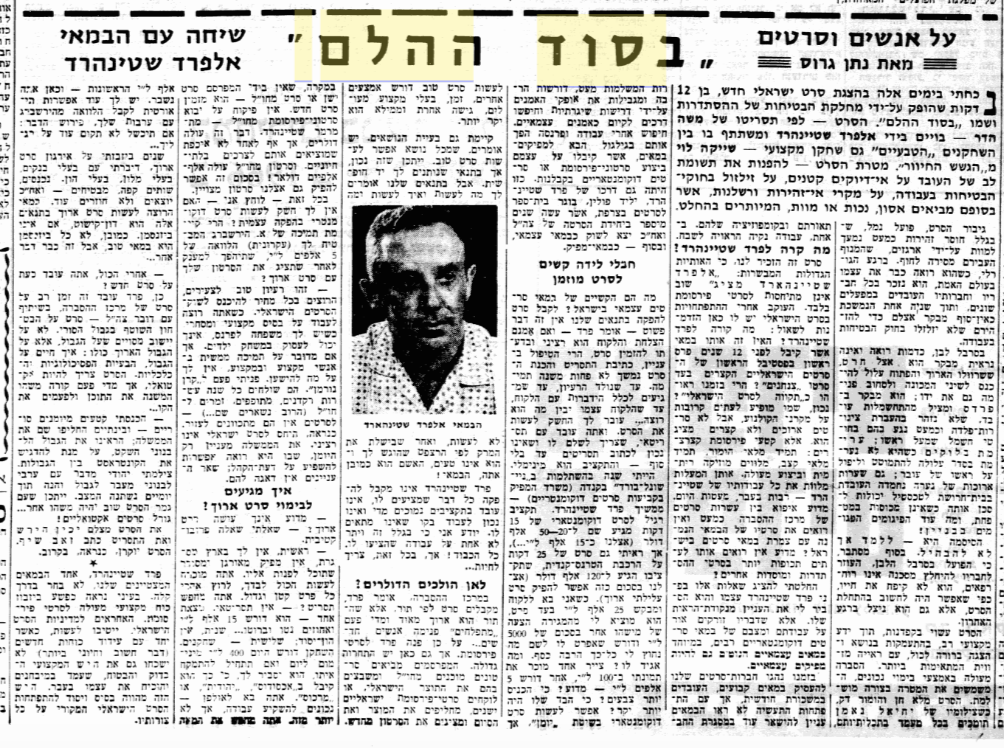
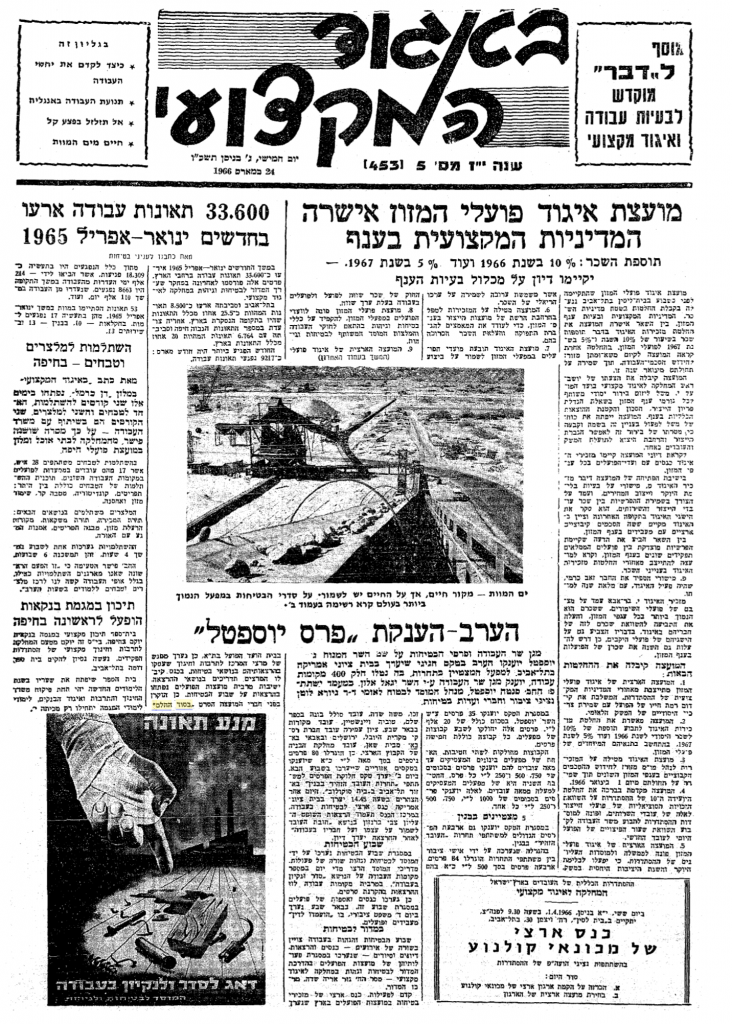
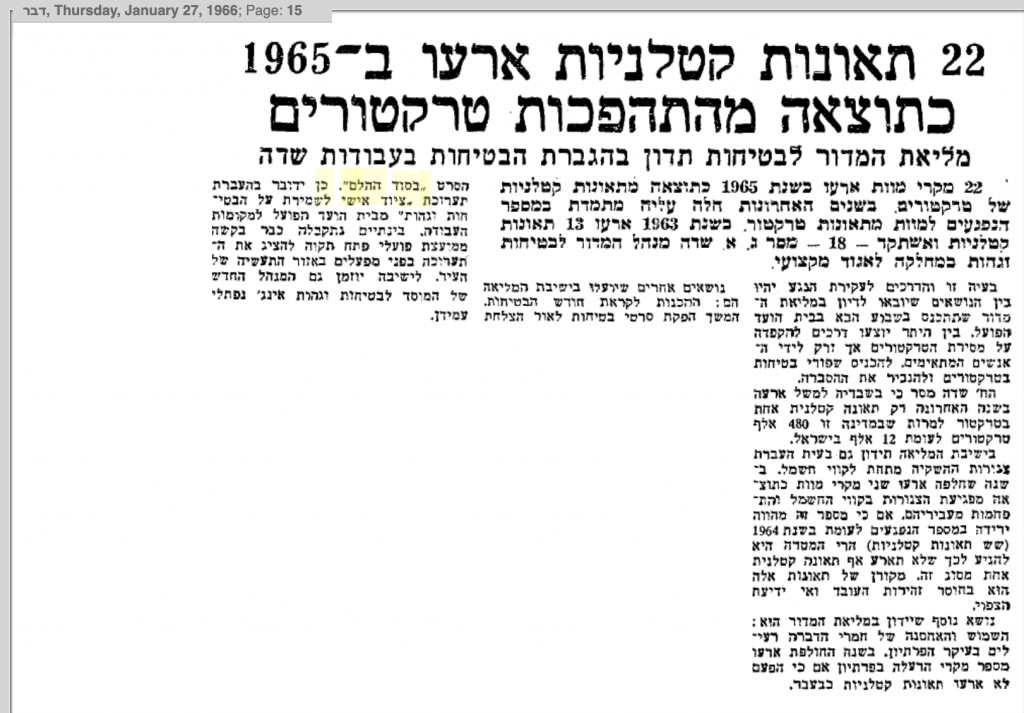
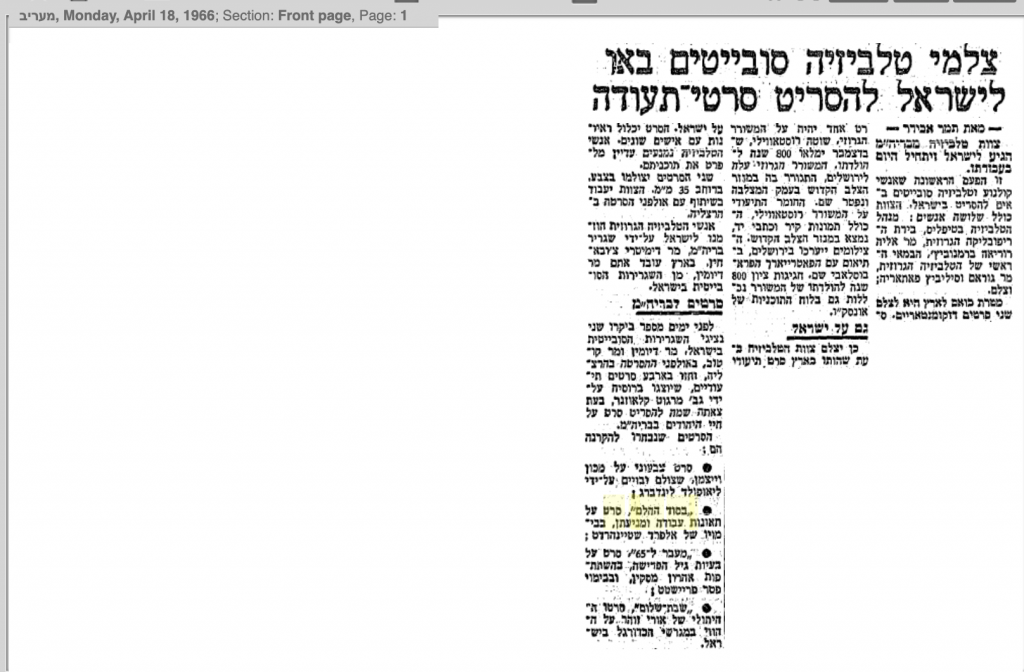
A Day That Is All Good - 1965
Screenplay: Moshe Hadar
Director: Nathan Gross
Cinematography: Haim Schreiber
Illustrations: Moritz Oppenheim
Length: 12 minutes
A campaign using visual methods to illustrate the Shabbat and the value of the Jewish religion to the public in Israel and in diaspora. The Council for Shabbat, initiated this campaign, producing individual films on the Sabbath, in cooperation with the Nehora Religious Film Institute and with the help of the Religious Minister Dr. Z. Verhaftig.
A Day That Is All Good, starts by presenting a bustling market on Friday – The preparations for the Shabbat in the city and the kibbutz – and ends at Havdalah (symbolic ceremony marking the end of Shabbat).
The film continues and shows the preparations for Shabbat in the markets and at home. It shows Shabbat customs (photographed on a weekday… by Haim Schreiber) exposing the holiness of the Shabbat – a day set aside for rest and worship. The audience is exposed to the Shabbat delights while showcasing artworks of great artists depicting the beauty of the Shabbat. The family presenting the story of the Shabbat, is Avrech Family (the children: Ziva and Giora), who were the neighbors of the director, Nathan Gross at 113 Derech Ha’Shalom during the 1960s.
While the preparations for the Sabbath and the ceremony marking the end of the day of rest were filmed as part of the cultural experience, the section depicting the Sabbath itself is a series of paintings by Jewish artist Moritz Oppenheim, which tells the life of Ashkenazi Jews. The paintings are graceful and examples of his power of conception and accuracy, accompanied by a reviving text describing the characters of a grandfather, a grandson and a wise student. This piece, along with a montage on lighting the candles, "Le’cha Dodi" and then "Havdalah" add to the film a festive and artistic hue. The editing is stimulating: richness of themes and places; the text, which is almost entirely based on quotes from the scriptures, transform the film to an exciting educational document.
The film was loaned and leased to youth organizations, women's organizations, synagogue groups, government offices, to the worldwide Hebrew alliance for the "floating studio" in a variety of cruise excursions, etc. Overseas, the film was distributed and screened in France, England, the United States, South Africa, Turkey, Canada and more.
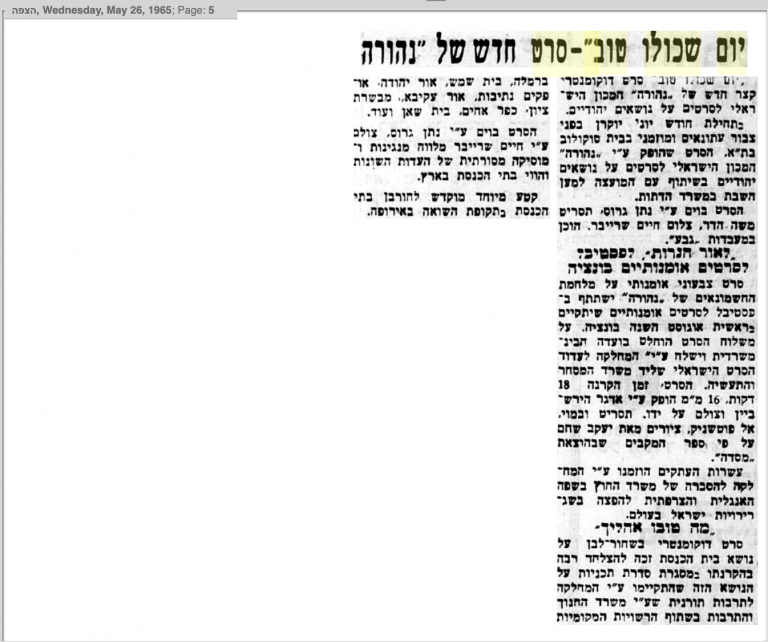
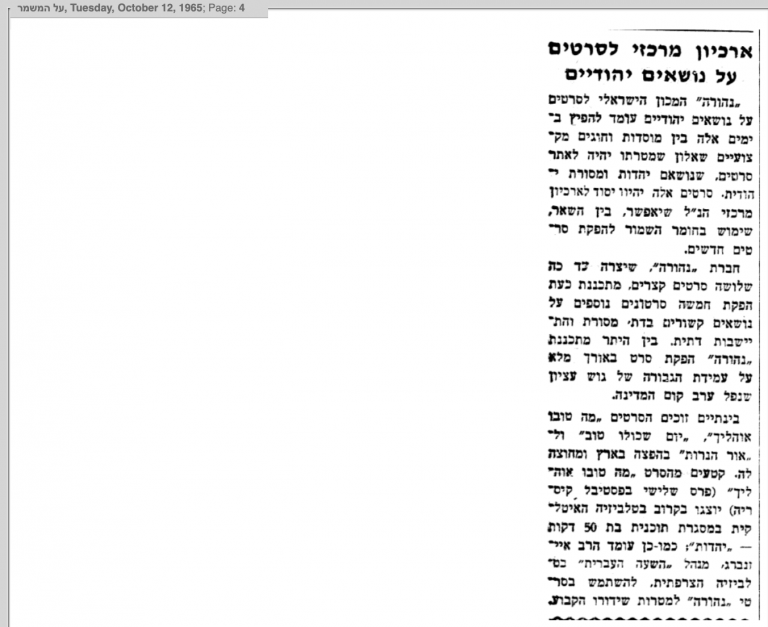
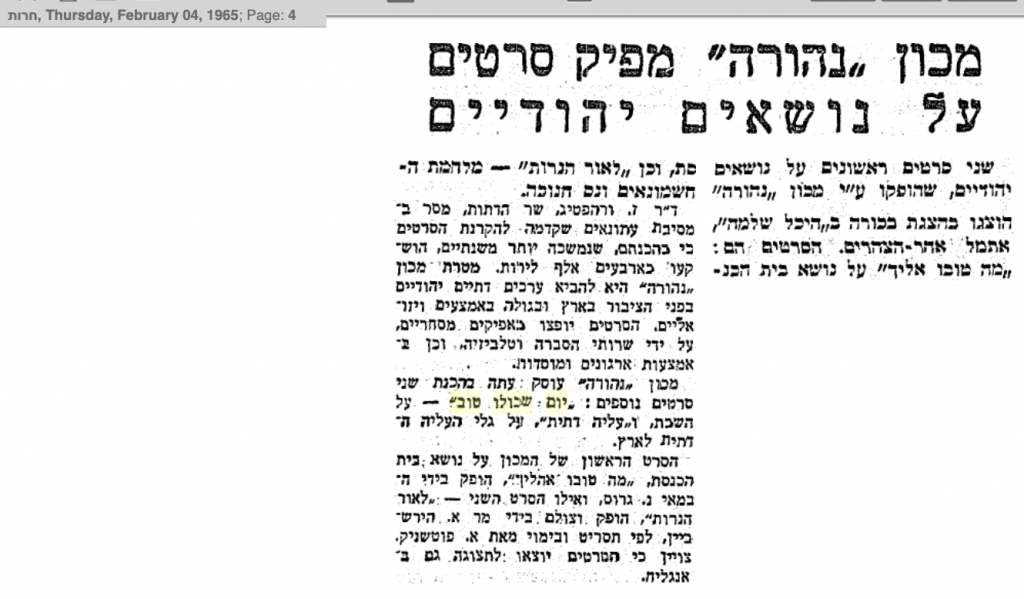
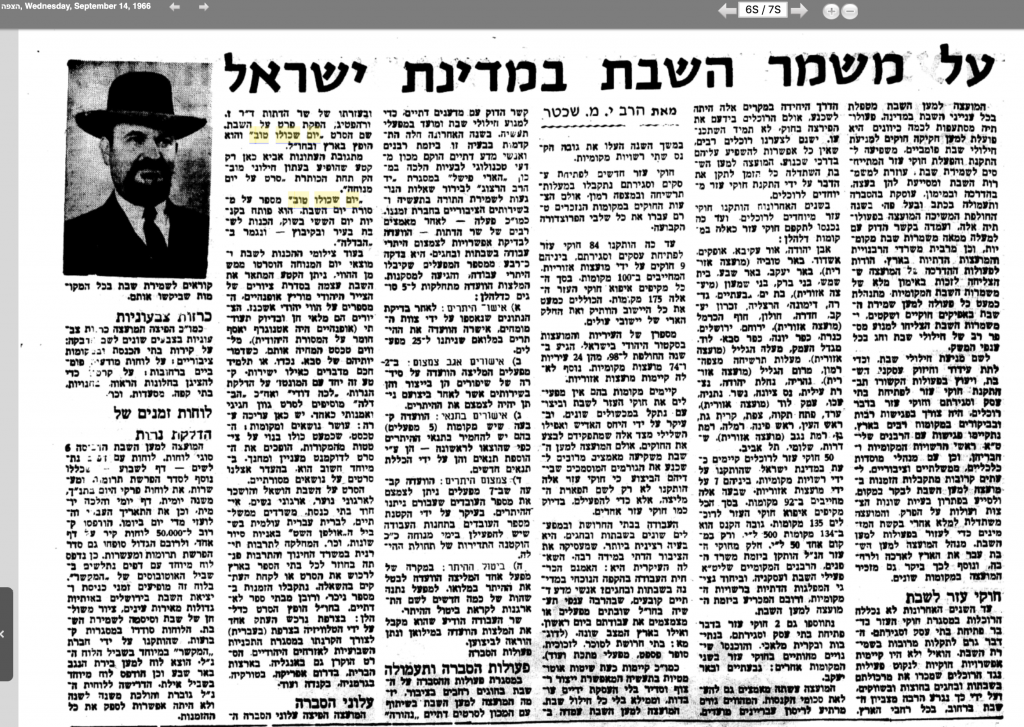
Yard Rebellion – 1968
Screenplay: Moshe Hadar
Director: Ivan (Ilan) Angel-Eldad
Photo: Marco Jacobowitz
Producer: Matti Raz
Length: 5 minutes
Sponsored by: Housing Culture Association Services
The plot is packed with humor, original ideas that turns the story of "The Rebellion in the Yard" into an entertaining and comical film (November 1957, Cinema Art).
The story is about a trash can that is fed up with all the filth that surrounds it (because most citizens usually throw the garbage around the trash rather than inside). The trash can organize a walk out over filth. It calls for a strike, sending all the other trash cans to the picket lines, standing up for their fundamental rights to have a clean environment.
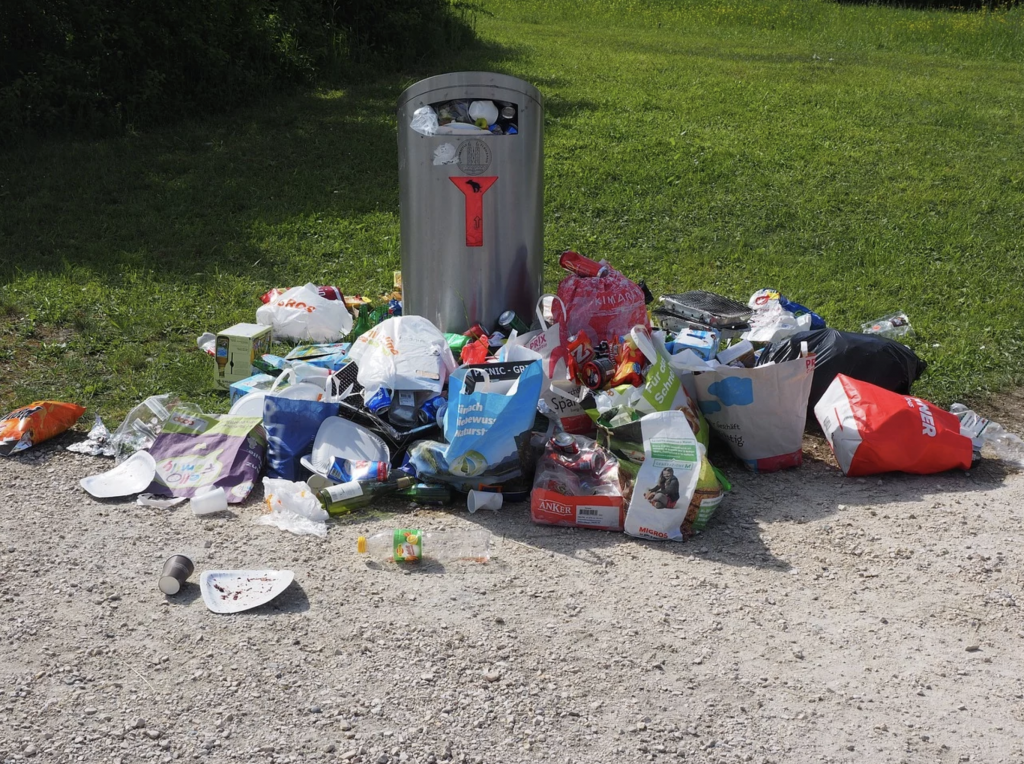

Blue and White - 1969
Screenplay: Moshe Hadar
Director: Ilan Eldad
Photo: Nissim Leon, Niccio
Music: Mel Keller
Produced: Roll Films
Length: 12 minutes
Sponsored by: The Manufacturers Association of Israel. Its mission to encourage buying “Made in Israel” products, expose the Israeli products’ quality, support Israeli industry and raise the consciousness among the Israeli public. It was the first in a series of films.
While Israeli goods are in demand around the world, the Israeli buyer does not yet know the nature of the products. It doesn’t know what the Israeli industry is producing and what achievements were reached. "the film is directed in a form and pace that characterized ‘The rhythm of Tomorrow’- relying on the script by Moshe Hadar, who is usually jam-packed with nice little jokes.
There is no narration in the film – the power of visualization speaks loud and clear. ‘The Israeli industry accompanies you everywhere and at any moment’ – this is the silk-thread, which is woven from beginning to end of the film, with a quick pace in front of your eyes alternating images of a young couple and images of the Israeli industry producing soaps, cosmetics, confectionaries, food jars, clothing, shells and bullets. Private, industry, government, collective farms, military – but without the names. Advertising – with no advertisement.
Towards the end of the movie, the young couple is shown after their marriage on their way to a honeymoon filled with shopping in London, England. The couple shop and buy whatever crosses their path. Upon their return to Israel, the customs officer in the Lod airport (today Ben-Gurion Airport), looks at them suspiciously. But when he begins to inspect the content of their suitcases, it becomes apparent from the tags, that everything the young couple bought abroad is made in Israel.”
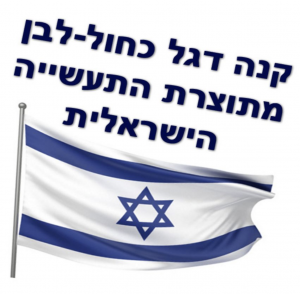
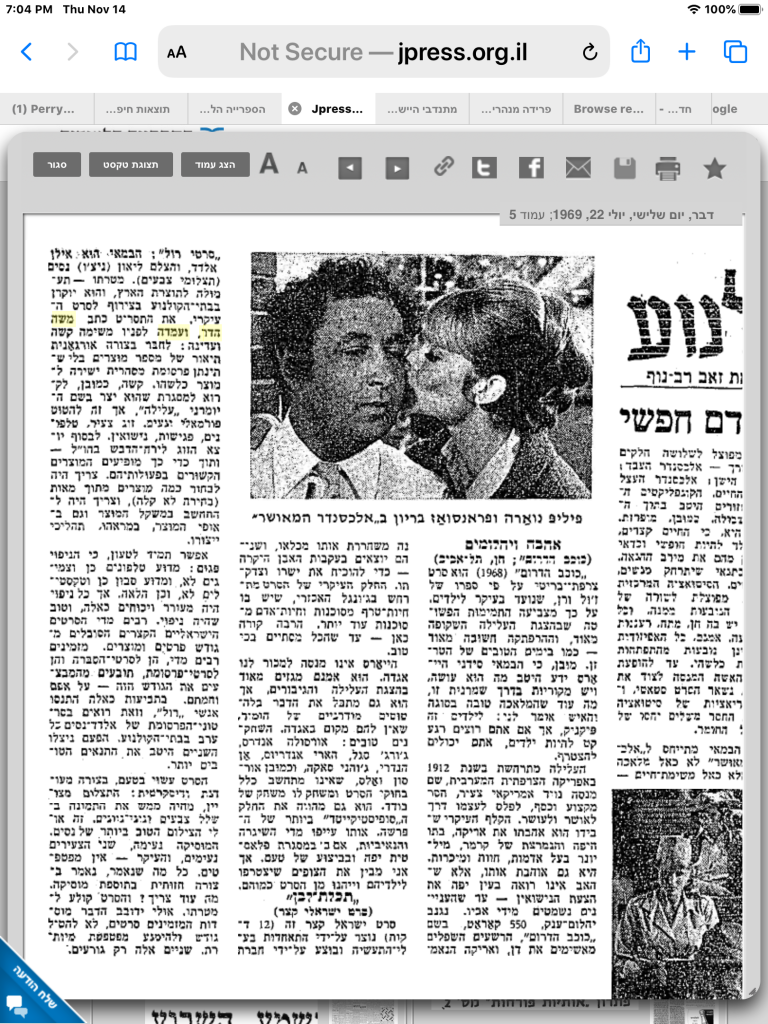
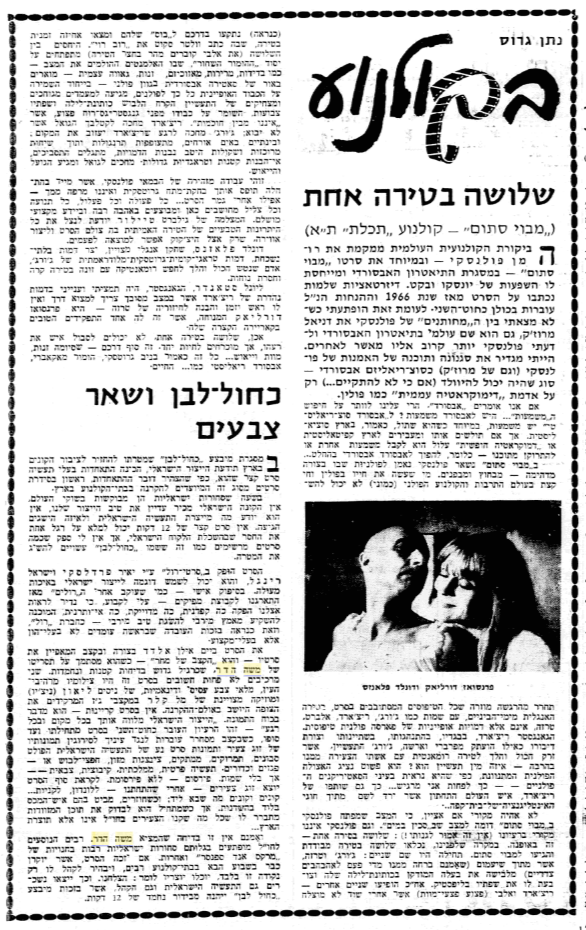
Banana Striptease – 1970s
Pommy was asked by the Israeli Banana Growers Association to create a campaign boosting banana consumption in Israel and thus the economy growth of the industry.
The opening scene of the film introduces a man seating in a striptease club. Watching the dance show, the man holds a banana. Each time the dancer sheds part of her apparel, the man peels off another piece of the banana. Occasionally, the film dissolves to introduce the audience to the benefit of bananas, recipes and desserts as well as to an explanation about the nutritional values and medicinal properties of the banana fruit.
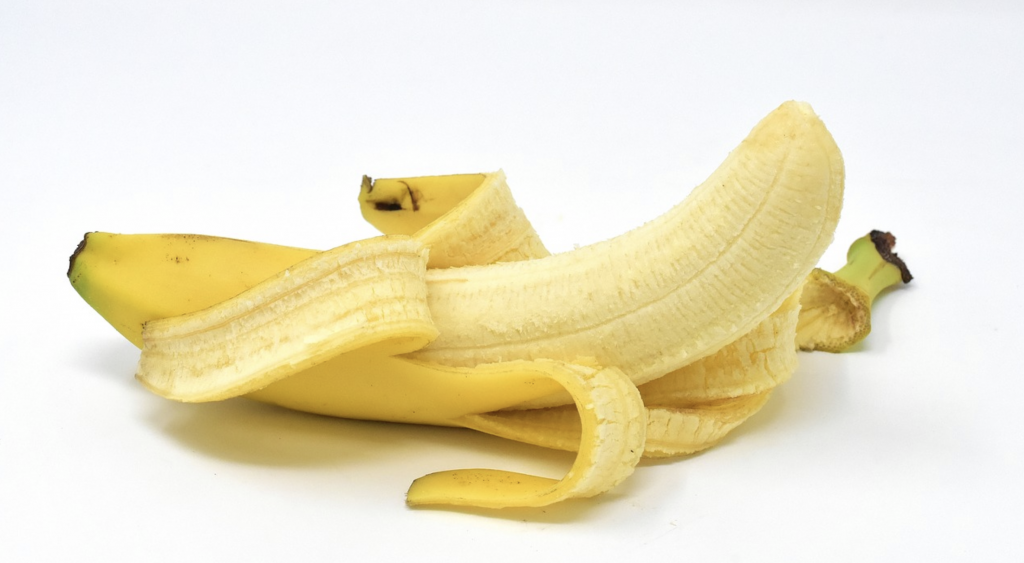
Holiday on Ice - 1976
Commercial for Amcor Refrigerators.
The first scene introduces a housewife in her kitchen. She opens the top freezer door in her Amcor Refrigerator. The camera zooms into the freezer, transforming the audience to an ice rink. The housewife is now wearing a figure skating outfit and sliding with her metal-blades skates over a smooth ice surface in the company of the famous Holiday On Ice skaters.
The commercial won first prize, Gold Medal, at the 19th International Film and Television Festival, New York, November 1976.
